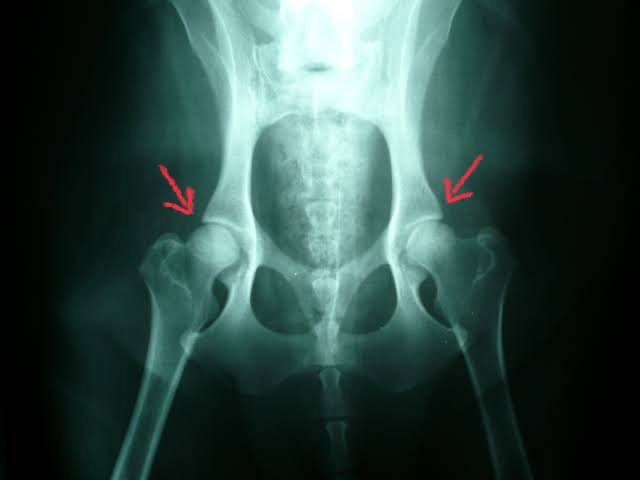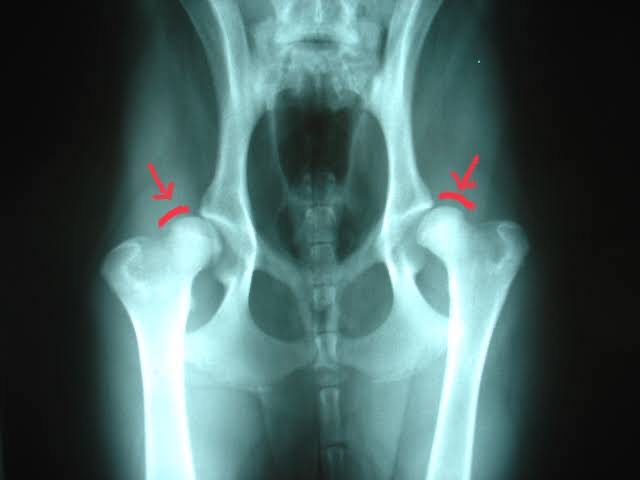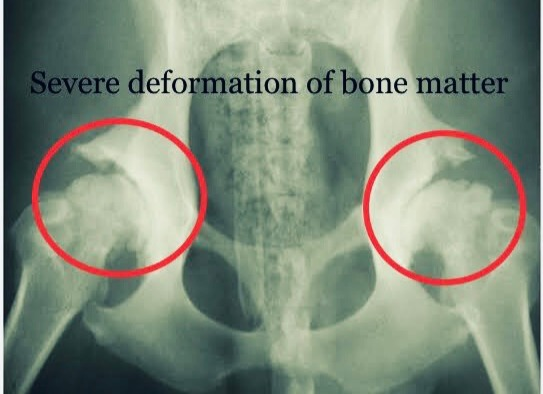
Does your dog have arthritis? What is arthritis and what causes it in dogs?
Two of the most commonly seen joint conditions today are Hip dysplasia and Osteoarthritis(OA). Dogs are genetically predisposed to these conditions and they can come on pretty early in their lives. There isn’t a definitive “cure” as such for them and are both considered progressive in nature.
What is Hip Dysplasia?
Hip dysplasia used to be commonly known as a large or giant breed condition. But the fact today is that it can and does affect dogs of any breed and size. Hip dysplasia is a skeletal condition that has a genetic predisposition. Having said that, it is a polygenic trait that is highly affected by environmental factors. This means that although you might have the gene that makes you more likely to have a particular condition, your environment has to contribute towards making that gene “express” itself, thus giving you the condition.
A simple example is, I am genetically predisposed to have type 2 diabetes. Both sets of my grandparents had it, my father has it and so do all his brothers. However, a bad lifestyle and eating habits is going to be the trigger that gives me type 2 diabetes. If my lifestyle and eating habits are on point, I could avoid it or the severity of it, for a long time. This is a very simplistic view of the topic, but it explains the point.
Going back to hip dysplasia and what it is, requires some explanation of anatomy of the hip joint.
The hip joint is a ball and socket joint. The ball sits snugly inside the socket, surrounded by cartilage and joint fluid. Allowing for a smooth ‘glide and slide’ movement. The hip joint is actually very versatile, and moves in a variety of directions, thus making it an important joint.

In dogs with hip dysplasia, the joint either does not develop properly, or it moves out of place and does not “fit” properly anymore. Instead of being a snug fit, it is loose or partial fit. Over time, the cartilage and joint fluid deteriorates due to the mis-angled gliding of the joint. This can cause considerable inflammation, lameness and chronic pain, affecting the dog’s quality of life.
In India, Hip dysplasia is very prevalent in Labrador retrievers, Beagles Golden retrievers and German shepherds.
What is Osteoarthritis in dogs?

Osteoarthritis, commonly known as just arthritis, is also known as Degenerative joint disease (DJD). This is because it is a progressive, degenerative condition that involves a long term deterioration of the cartilage around the joint. It is disabling for dogs and is non-curable. As many as 1 in 4 dogs over the age of 1 have an early onset of OA and as many as 4 in 5 older dogs will have OA. Puppies with Hip dysplasia or elbow dysplasia (which is very similar to the hip condition) will show early onset of Arthritis or DJD. The important thing to remember is, pain will start much much before the x-ray will show you the deformity. ,So it is important to read up on the early signs of pain. Read more.
How to manage joint conditions in dogs?
Like all progressive and degenerative conditions, we, as pet families, have to be equipped to manage these and prevent further damage to the affected joints. There are several environmental and lifestyle related changes that can be implemented to help our dogs cope with the condition that we cover during our consultations with the families.

Simple cost effective and easy to implement strategies that help the joints prevent damage on a daily basis. Some of them involve providing the dogs with good non slip surfaces at home, so that they are not constantly slipping on our super slippery floorings and causing micro injuries to already tender & painful joints. The pain from arthritis (even at early stages) can be quite excruciating. And to make matters worse, the pain will start up to a year BEFORE it shows up on the X-ray. ,So watch out for the more subtle signs of pain that can be very easy to miss.
Recognizing when to get your dog some pain relief medication and more importantly recognizing when not to overindulge in the medication is of utmost importance. Here are a few facts about medication and arthritis.
- NSAID’s – non-steroidal anti-inflammatory drugs – although very good at doing its job, also put tremendous amounts of pressure on the liver. Long term use of these medications have shown severe ,impairment of the liver and kidneys(Read more).
- NSAID’s are very effective in reducing the inflammation at the joint site and providing the immediate pain relief that your dog may need.
- However, once the initial anti0-inflammation has been done, there are several natural, chemical free remedies available in herbs and lifestyle/ environmental changes, that can help the effect of these medications last longer.
- As your dog gets older, and the arthritis progresses, the need for medication will increase, either in dosage or in frequency. At this time, if the dog has been over medicated or has become dependent on the medication over prolonged periods, many will cease to work as effectively, and or, may already have has its toll on the liver and kidneys. With an older dog, desperately in need of pain relief, you DO NOT want to end up in a situation where you can not give them adequate relief.
All in all, management of arthritis can not be avoided, and to effectively manage it, a holistic approach with a multi pronged approach of holistic wellbeing must be undertaken in all earnest.
Does weight management for your dog play an important role in managing arthritis?
Let’s now look at the relationship between excess weight and these joint problems. Studies have been conducted in 2 major areas; One being, does excess weight cause Osteoarthritis? The second being, Can weight reduction alone (studied objectively and subjectively) improve the pain quotient, mobility, inflammation and quality of life? ,Answers to both these studies were not so surprising YES!(Read Study)
Excess weight CAN in fact cause the onset of OA and HD as it changes the ,gait considerably. Puts tremendous pressure on the joints and gives way to a chronic inflammatory response in the body. We have already seen how Chronic inflammatory response ,(,,Click here,,) in the body creates havoc with the immune system.
Weight reduction on the other hand starts improving the gait, mobility and pain quotient as early as 6-8% weight loss onwards. This is not to say our dogs need to lose only 6% weight! The amount of weight a particular dog may need to loose is very individual, and needs a physical examination to determine with a detailed evaluation of pain and gait compensation. Some dogs may even get recommended to become a little underweight, based on the severity of their pain and lameness.
Being overweight and its relationship to pain and inflammation.

For decades the medical science professionals and veterinarians have thought that being overweight is painful because of the extra wear and tear it puts the bones through, and this is true. However, we now know that fat tissue is very biologically active and secretes hormones and other chemicals that both cause and enhance inflammation. The hormone leptin, which is produced by fat cells, causes inflammation when it infiltrates joints. In addition, leptin may influence the bone changes associated with OA. Finally, inflammation can affect the body’s responses to other hormones such as cortisol and insulin, further unbalancing the body’s attempts at self-regulation and influencing the amount and extent of pain dogs experience. Lack of self-regulation of hormones like leptin and insulin also lead to various other problems like type 2 diabetes what we aim to cover in future blogs.
Conclusion:
All is not lost, weight management, lifestyle changes and some environmental changes can bring great relief to your beloved dog. Dog’s with a good management plan in place can in fact, have a good quality of life. If your dog has already been diagnosed with these conditions, it is imperative to focus on the weight loss first. IF your dog is young or is of a breed that is genetically predisposed to these then preventative measures in lifestyle and environment can save them a lot of pain in the future, by delaying onset and reducing severity. The correct diet and ideal weight management is the key WITHOUT the over-exercising.
Share this blog with friends who have dogs with arthritis, or hip dysplasia, to help them understand the condition better.
Has your dog been diagnosed with arthritis or Hip dysplasia? What are the management tools you have put into place? Share your experiences with us.


